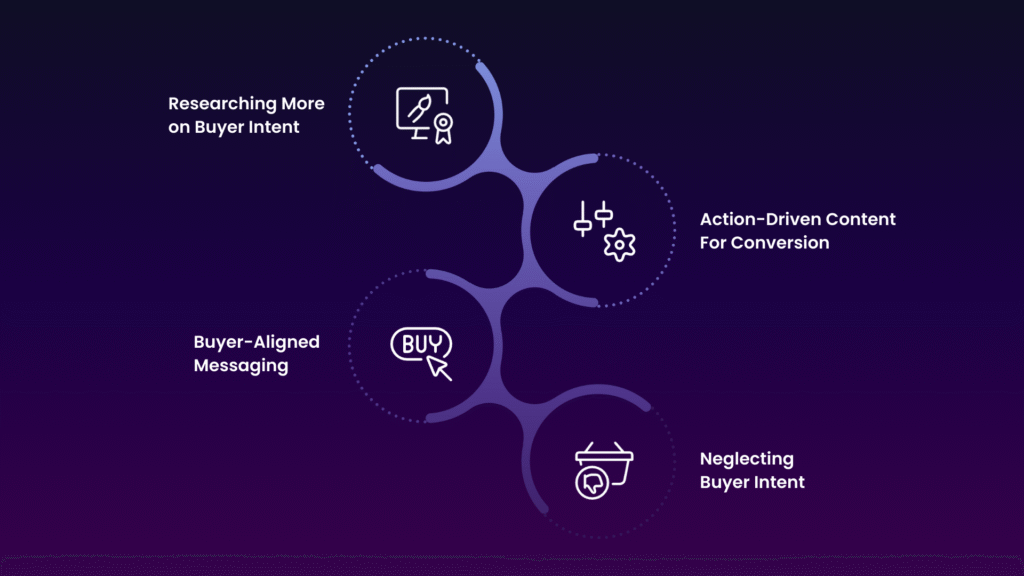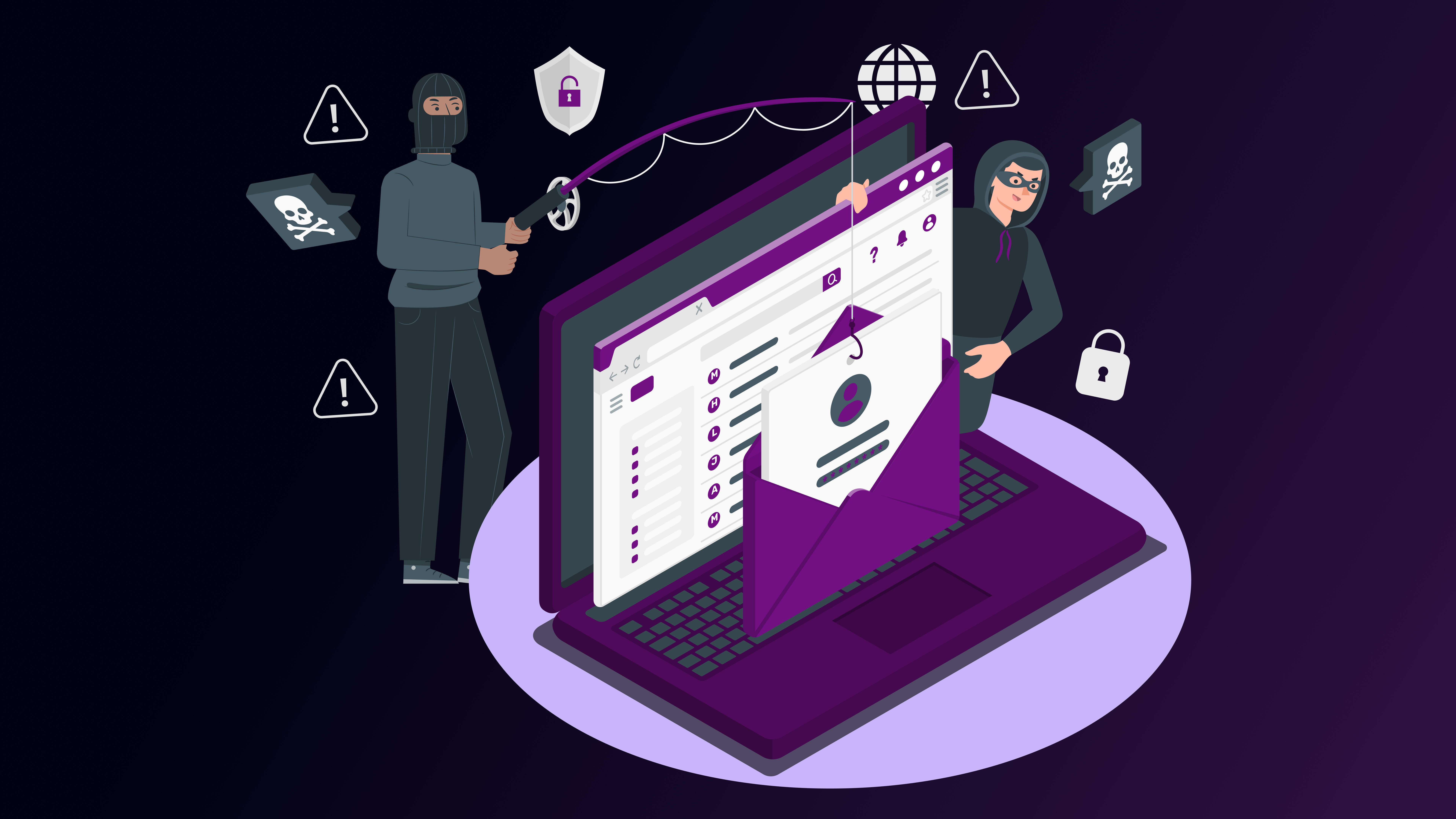If you still wonder why Cybersecurity SEO is different from the usual SEO execution, you are at the right place. Since, the industry runs heavily on building trust, SEO for cybersecurity becomes more about content relevancy, quality of references, and the use of appropriate technical terminologies. That’s why it is unique and so difficult to crack by many marketing agencies.
SEO for cybersecurity companies isn’t just about ranking for technical terms – it’s also about attracting the right decision-makers. It’s not enough to simply write technical content if you want to drive qualified leads.
Yes, being a cybersecurity firm, your website needs to have technical content there. In fact, your website needs to be about the product/service and what it does.
But if you think technical content is enough to drive qualified leads through organic search, you’re missing the point.
Yes, you need to talk about encryption algorithms, threat detection models, and zero-trust frameworks. But a lot of that would appeal to an engineering team, but not your real buyer.
Your real buyer is a CISO or a risk-aware business leader.
They care about:
“How vulnerable are they?”
“Will this tool reduce their compliance burden?”
“Is this better than their current email security solution?”
“Can I get this approved by my board?”
That’s the content they’re are more interested to read and book a call for. That’s the kind of content that’d make them click the CTA’s and move a needle.
At Digi-tx, our understanding is that cybersecurity content is complex and hard to crack at once. Even more difficult is to write for your buyer.
The users of the product are mostly engineers, cybersecurity analysts, or Consultants but the real decision is only taken by either the CISO, CIO or any one of the C-Suite folks.
So, it is quite obvious, that many cybersecurity business owners write technicalities for the users or the analysts. The business value from the product/service isn’t given much importance.
And then, they invest months in content that might rank but never gets enough traffic, never resonates, and never converts – because they don’t understand the difference between technical depth and buyer-aligned messaging.
In this blog, we’re breaking down what real SEO for cybersecurity companies looks like – from content strategy that speaks to the right concerns, appropriate content & page structure, to building trust through intent-driven blogs, product comparison pages, and proof, and actually getting your site ranked where your buyers are searching.
So, let’s get into it.
Why Most SEO for Cybersecurity Companies Falls Flat?
Because they don’t start with the buyer.
They start with content calendars, keyword stuffing, and vague product messaging. And that’s exactly why they fail to attract enough of the real buyers.
This isn’t just a cybersecurity problem – we’ve seen it in SaaS, fintech, health-tech too and particularly the challenges in SEO for startups. But in cybersecurity, the gap shows up louder.
Why?
Because the buyer is usually someone like a CISO, compliance lead, or a risk-aware decision maker – someone who’s technically fluent, skeptical, and way too busy to read another generic blog about “why threat detection is important.”
Here’s what most cybersecurity brands get wrong:
- They showcase technical expertise, which is good…
- But don’t share real proof of what it’s like to work with them
- They publish dry, complex blogs with no narrative hook or CTA
- They write content based on what they think is impressive – not what their buyers are searching for
The gap isn’t in your tech.
It’s in how you perceive your audience and what they care about.
Here’s what our research has shown – from running B2B SEO strategy for cybersecurity brands and digging into real search data using tools like Semrush, Ahrefs, and Perplexity AI:
Real cybersecurity buyers are searching for things like:
- “Best MDR tools that integrate with Google Workspace”
- “Email security compliance for fintech companies”
- “How to reduce false positives in phishing filters”
- “CISO board report template”
These are some of the real, intent-driven queries. Not vanity keywords. Not fluff.
SEO for Cybersecurity – when done right – helps you surface exactly this kind of content. It meets the buyer where they already are, with clarity, confidence, and contextual relevance.
How to use technical content for cyber security SEO?
Don’t get me wrong – technical content is necessary. Especially for cybersecurity brands. You’re selling something complex. Your buyers expect a certain level of depth.
But what’s more important?
Having a strategy behind that technical content – a plan that helps your audience connect the dots between what you’ve built and why it matters to their business.
Why’s that relevant?
Your buyer isn’t going to decode your threat model page or encryption architecture to figure out what it means for their compliance posture, their audit prep, or their team’s daily workflow.
They’re looking for someone who gets it – who can talk about technical brilliance and also position it in the context of business value.
So instead of just explaining how your UEBA engine works…
Position it as:
“How your SOC team can spot insider threats faster – without hiring more analysts.”
Instead of listing the layers in your threat detection pipeline…
Frame it as:
“The fastest way to detect phishing attempts your current provider keeps missing.”
This isn’t just storytelling. It’s positioning – and it turns your tech from a spec sheet into a strategic advantage.
It also helps in doing SEO for Cybersecurity. Because when you start anchoring content around how your tech solves specific, high-intent problems, you naturally hit the keywords your buyers are actually searching.
At Digi-tx, this is what we build out for every client:
Technical content → repositioned for value → structured for discoverability → built to convert.
That’s when your content stops feeling like a knowledge dump…
And starts working like a 24/7 sales asset.
How AI Can Supercharge Your Cyber security SEO ?

AI isn’t your SEO replacement. But it can be your research assistant, strategist, and technical translator – if you let it be.
At Digi-tx, we work with cybersecurity companies where the product teams live in acronyms and code… and the buyers? They want impact, compliance, and peace of mind.
Bridging that communication gap through content is hard – and that’s where AI is your biggest growth lever.
Here’s how we use it (and how you should too):
Research Buyer-Intent Keywords and Questions, Fast
AI tools like Perplexity AI, Keyword Insights AI, and ChatGPT (with browsing) let you go beyond obvious keywords.
Instead of starting from scratch, you can:
- Identify high-intent queries in minutes
- Group those queries by theme or funnel stage
- Uncover long-tail searches your competitors haven’t even noticed
Bonus: With the B2B SEO tools in the market, you can pull question-based variations to power FAQ sections or answer box optimizations – the kind that’s loved by both Google and generative search engines.
Build Smarter Content Briefs That Actually Convert
At Digi-tx, we use AI to create structured content briefs that do more than fill pages. These briefs outline:
- Clear H1/H2 structures
- Related keywords by search intent
- Internal linking opportunities to service pages or case studies
- Recommended CTAs by stage of buyer journey
- Schema markup suggestions (for better visibility in SERPs and AI summaries)
Your team starts writing with direction and finishes with content that’s aligned, optimized, and easy to measure.
Map Out Scalable Topic Clusters
Cybersecurity is deep, and buyers don’t convert after one read. You need topic clusters that guide them from education to action.
There are several AI-powered content planning tools that can help you:
- Identify content gaps in your current website
- Group related topics together based on ranking potential
- Plan long-form pillar pages + supporting blogs in a few clicks
This makes it easier to structure full-funnel SEO plans – especially when you’re short on time, budget, or team.
Turn Performance Data Into Strategy, Not Guesswork
There are other AI-driven tools which give you website analytics and also help to interpret them.
Want to know:
- Which blog format drives the most demo bookings?
- What CTA placement increases scroll depth by 27%?
- Where you’re missing internal links that could double engagement?
AI helps you analyze those patterns quickly, so you spend less time in Google Sheets and more time executing the changes that drive ROI.
SEO for cybersecurity companies isn’t a “write and wait” game anymore.
It’s about pairing your team’s expertise with tools that amplify your thinking and multiply your results.
And AI, when used the right way, lets you do just that. No fluff. Just faster execution, smarter decisions, and scalable outcomes.
How to build a strong funnel for Cybersecurity websites?
All the tools, content, and AI strategies in the world won’t matter if your website funnel is broken.
You need to educate those buyers who don’t know if any solution exists, attract those buyers who are educated and ready to buy a solution and also bring in those buyers who are comparing multiple options and looking for a solution like yours.
Here’s the flow we build (and recommend) for every cybersecurity client we work with at Digi-tx:
Top of Funnel (ToFu) – Build Visibility & Trust
This is where content casts the widest net. Your goal here is to educate, validate, and engage. Use:
- Informational blogs – addressing concerns like “how to prepare for a SOC 2 audit” or “what does AI mean for cloud security?” or “what is your email security solution missing?”
- Resource hubs – dedicated sections for guides, glossaries, or industry breakdowns
- SEO-focused pages – optimized to answer common questions and rank on search and generative platforms
These are the entry points that bring qualified traffic to your site.
Middle of Funnel (MoFu) – Create Connection & Confidence
Now that they know you exist, it’s time to position your product/service as the right fit.
- Product comparison pages – “Microsoft Defender vs Our Tool” or “How Our Red Teaming Works Differently”
- Use-case blogs – showing the application of your solution to a specific industry or pain point
- Webinars or gated content – where you go deeper on methodology, tech stack, or compliance wins
This is where your SEO overlaps with your sales enablement – and where your credibility starts converting.
Bottom of Funnel (BoFu) – Seal Trust & Drive Conversions
Here’s where you make it easy for the buyer to move from “interested” to “involved.”
- High-impact service pages – clearly describing outcomes, timelines, integrations, and differentiators
- Case studies – real stories with metrics and results
- CTAs placed in context – not just “Book a demo,” but “See how we reduced phishing by 82% in 30 days”
If you’ve built trust at the top and helped them evaluate in the middle, this part should feel natural, not forced.
Why SEO for Cybersecurity Isn’t Just About Rankings?
Ranking for any “cybersecurity services” keyword doesn’t help if the visitor bounces in 3 seconds.
Writing a great blog on “AI in email threats” doesn’t help if your homepage doesn’t show what you do.
SEO for cybersecurity companies is about being found, being understood, and being trusted.
At Digi-tx, we don’t just build SEO strategies – we partner with technical founders, growth leaders, and marketers who want clarity, conversions, and compounding returns from their organic efforts.
Whether you’re building your first blog or trying to outrank a competitor with 3x your budget, we’ll help you get there.
Want a plan that fits your funnel, not someone else’s? Want content that speaks to CISOs and Google?
Let’s build it together.
Book an intro call and know how we approach content-led SEO for cybersecurity brands.





